Commandant of the Coast Guard
| Commandant of the United States Coast Guard | |
|---|---|
 | |
| Formation | 14 December 1889 |
| First holder | Leonard G. Shepard |
| Website |
http: |
The Commandant of the United States Coast Guard is the service chief and highest-ranking member of the U.S. Coast Guard. The Commandant is an admiral, appointed for a four-year term by the President of the United States upon confirmation by the United States Senate. The Commandant is assisted by a Vice Commandant, who is also an admiral, and two Area Commanders (U.S. Coast Guard Pacific Area and U.S. Coast Guard Atlantic Area) and two Deputy Commandants (Deputy Commandant for Operations and Deputy Commandant for Mission Support), all of whom are vice admirals.
Though the United States Coast Guard is one of the five military branches of the United States, unlike the other service chiefs, the Commandant of the Coast Guard is not a member of the Joint Chiefs of Staff. The Commandant is, however, entitled to the same supplemental pay as the Joint Chiefs, per 37 U.S.C § 414(a)(5) ($4,000 per annum in 2009), and is accorded privilege of the floor under Senate Rule XXIII(1) as a de facto JCS member during Presidential addresses. The Commandant is also the only service chief who maintains operational command over his service. The Commandant reports to the President, via the Secretary of Homeland Security. Prior to the creation of the Department of Homeland Security in 2003, the United States Coast Guard operated under and the Commandant reported to the Secretary of Transportation from 1966 to 2003, and the Secretary of Treasury from 1790 until 1966.
History
The title of Commandant dates to a 1923 act that distributed the commissioned line and engineer officers of the U.S. Coast Guard in grades. Before 1923, the rank and title of the head of the Coast Guard was "captain-commandant." The rank "captain-commandant" originated in the Revenue Cutter Service in 1908. The original holder of that rank was the Chief of the Revenue Cutter Service (also known as the Revenue Marine). The Coast Guard traces the lineage of Commandants back to Captain Leonard G. Shepard, chief of the Revenue Marine Bureau, even though he never officially received the title of Captain-Commandant. The Captain-Commandant position was created in 1908 when Captain Worth G. Ross was the first to actually hold the position. Although he was retired, Ross's predecessor, Captain Charles F. Shoemaker, was elevated to the rank of Captain-Commandant. Shoemaker's predecessor, Captain Shepard, had already died and was not elevated to the rank.
Chiefs of the Revenue Marine Bureau
Chiefs exercised centralized control over the Revenue Marine Bureau.
- Captain Alexander V. Fraser, USRM, 1843–1848
- Captain Richard Evans, USRM, 1848–1849
In 1849 the Revenue Marine Bureau was dissolved, and the Revenue Marine fell under the control the Commissioner of Customs until the Revenue Marine Bureau was again established in 1869.
- N. Broughton Devereux, 1869–1871
- Sumner I. Kimball, 1871–1878
- Ezra Clark, 1878–1885
- Peter Bonnett, 1885–1889
List of Commandants
There have been 25 Commandants of the Coast Guard since the office of Chief of the Revenue Marine Bureau was transferred to a military billet.[1] This includes Admiral Paul F. Zukunft, the current Commandant.
| # | Picture | Name | Rank | Start of tenure | End of tenure | Notes |
|---|---|---|---|---|---|---|
| 1 | 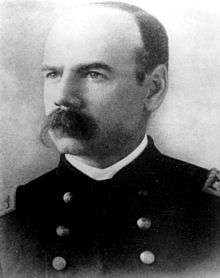 |
Leonard G. Shepard | Captain | 14 December 1889 | 14 March 1895 | Shepard became the first military Chief of the "Revenue Marine Division" of the Treasury Department and is considered to be the first Commandant.[2] |
| 2 | 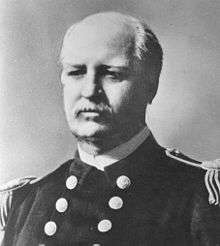 |
Charles F. Shoemaker | Captain | 19 March 1895 | 27 March 1905 | On 8 May 1908, Shoemaker was promoted to the rank of Captain-Commandant on the Retired List by Act of Congress. |
| 3 |  |
Worth G. Ross | Captain-Commandant | 25 April 1905 | 30 April 1911 | Ross was instrumental in the establishment of what was to become the U.S. Coast Guard Academy in New London, Connecticut. |
| 4 |  |
Ellsworth P. Bertholf | Commodore | 19 June 1911 | 30 June 1919 | Served during the merger of the U.S. Revenue Cutter Service with the U.S. Life-Saving Service to form the U.S. Coast Guard. Was the first Coast Guard officer the achieve flag rank.[Note 1] |
| 5 |  |
William E. Reynolds | Rear admiral | 2 October 1919 | 11 January 1924 | Reynolds was the first Coast Guard officer to be promoted to the rank of rear admiral. |
| 6 | 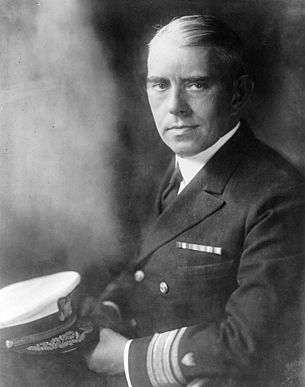 |
Frederick C. Billard | Rear admiral | 11 January 1924 | 17 May 1932 | Billard was appointed to three consecutive terms as Commandant and died in office May 17, 1932, serving through the Prohibition Era and reorganization of the Academy. |
| 7 | 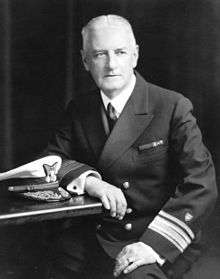 |
Harry G. Hamlet | Rear admiral | 14 June 1932 | 1 January 1936 | Hamlet persuaded Congress to dismiss efforts to merge the Coast Guard with the U.S. Navy. Continued serving after term as Commandant was over and eventually retired as a vice admiral by act of Congress. |
| 8 | 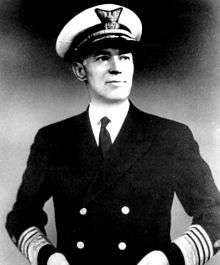 |
Russell R. Waesche | Admiral | 1 January 1936 | 1 January 1946 | Longest serving Commandant, first Commandant to be promoted to vice admiral and admiral. Commandant during World War II and helped the Coast Guard remain a separate distinct service while it was assigned to the U.S. Navy. Oversaw the largest manpower buildup in Coast Guard history and was instrumental in the formation of the U.S. Coast Guard Auxiliary and the U.S. Coast Guard Reserve.[Note 2] |
| 9 |  |
Joseph F. Farley | Admiral | 1 January 1946 | 1 January 1950 | Farley served during the difficult Post-World War II era when additional statutory responsibilities were being added to the Coast Guard's mission structure and personnel allowances were being reduced. |
| 10 | 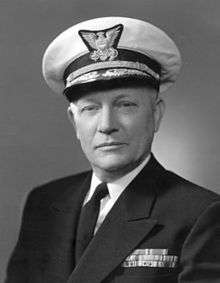 |
Merlin O'Neill | Vice admiral | 1 January 1950 | 1 June 1954 | O'Neill directed the increase in port security activities required by the passage of the Magnuson Act and revitalized the Coast Guard Reserve program emphasizing its defense mission during wartime. [Note 3] |
| 11 | 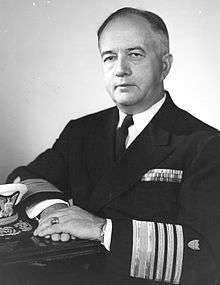 |
Alfred C. Richmond | Admiral | 1 June 1954 | 1 June 1962 | Richmond served two full terms as Commandant and was the United States delegate to many international maritime conferences during his tenure.[Note 4] |
| 12 | 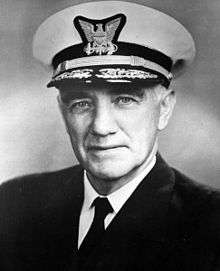 |
Edwin J. Roland | Admiral | 1 June 1962 | 1 June 1966 | Roland oversaw the replacement of many World War II era cutters under fleet modernization programs during his tenure. He assisted the U.S. Navy with operations in Vietnam by supplying crews and cutters for Operation Market Time. |
| 13 |  |
Willard J. Smith | Admiral | 1 June 1966 | 1 June 1970 | Smith was the Commandant of the Coast Guard when the service was transferred from the Department of the Treasury to the newly formed Department of Transportation. |
| 14 | 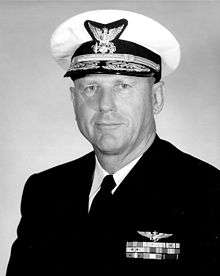 |
Chester R. Bender | Admiral | 1 June 1970 | 1 June 1974 | The Coast Guard undertook new statutory responsibilities in the areas of marine safety, environmental protection and law enforcement during his tenure, however Bender is best known for his changes in the dress uniform worn by Coast Guardsmen; sometimes referred to as "Bender's Blues". |
| 15 | 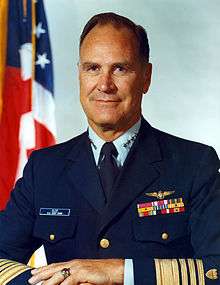 |
Owen W. Siler | Admiral | 1 June 1974 | 1 June 1978 | Several changes in environmental duties occurred during Siler's tenure as well as a step-up in drug interdiction activities. Under his tenure, the replacement of aging cutters was given budget priority, and the first women entered the Coast Guard Academy. |
| 16 | 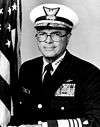 |
John B. Hayes | Admiral | 1 June 1978 | 28 May 1982 | Hayes experienced severe budget problems during his tenure while fending off a move in Congress to transfer the Coast Guard to the Navy. Drug interdiction was increased and several high-profile search and rescue cases occurred during his watch which helped keep the Coast Guard in the public eye. |
| 17 | 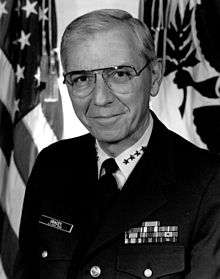 |
James S. Gracey | Admiral | 28 May 1982 | 30 May 1986 | Gracey faced tight budgets at the same time he was successful at replacing aging cutters. Increasing the Coast Guard's role in the defense of coastal waters was accomplished. |
| 18 |  |
Paul A. Yost, Jr. | Admiral | 30 May 1986 | 31 May 1990 | Yost successfully maintained the service through difficult budget battles each year. In doing so, he also emphasized three 'primary mission areas": maritime law enforcement, maritime safety, and defense readiness. There was an increased emphasis on military/naval capabilities of the service. |
| 19 |  |
J. William Kime | Admiral | 31 May 1990 | 1 June 1994 | Kime led the service during the end of the Cold War, collapse of the Soviet Union, the Persian Gulf War's Operations Desert Shield and Desert Storm, as well as increasing operations in drug interdiction and environmental law enforcement. |
| 20 | 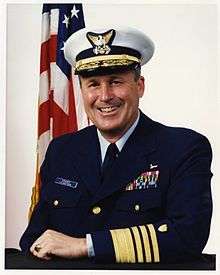 |
Robert E. Kramek | Admiral | 1 June 1994 | 30 May 1998 | |
| 21 |  |
James Loy | Admiral | 30 May 1998 | 30 May 2002 | |
| 22 | 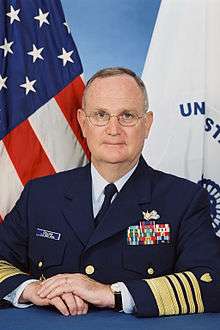 |
Thomas H. Collins | Admiral | 30 May 2002 | 25 May 2006 | |
| 23 |  |
Thad W. Allen | Admiral | 25 May 2006 | 25 May 2010 | |
| 24 | 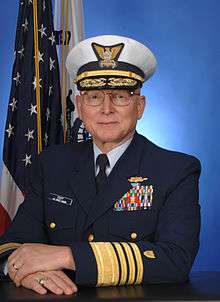 |
Robert J. Papp, Jr. | Admiral | 25 May 2010 | 30 May 2014 | |
| 25 | 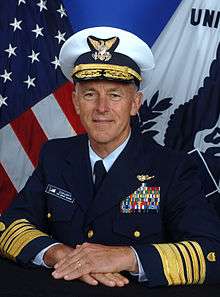 |
Paul F. Zukunft | Admiral | 30 May 2014 | Incumbent |
See also
Notes
- Footnotes
- ↑ Bertholf was reappointed Captain-Commandant on 19 June 1915 following the merger of the Revenue Cutter Service into the newly formed Coast Guard[3]
- ↑ Appointed Commandant as rear admiral. Appointed admiral 4 April 1945. First officer to attain ranks of vice admiral and admiral.
- ↑ O'Neill retired from the Coast Guard on 1 June 1954 with the rank of admiral.[4]
- ↑ Appointed as a vice admiral and received promotion to admiral on 1 June 1960 by Public Law 86-474, under which all Coast Guard commandants thereafter are appointed to the rank of admiral.
- Citations
- ↑ "Commandants of the U.S. Coast Guard & Chiefs of the Revenue Marine Division". Retrieved 2011-02-10.
- ↑ "United States Coast Guard History". Retrieved 2009-01-28.
- ↑ Kroll, pp 107–108
- ↑ Coast Guard Historian's Office "Merlin O'Neill, USCG"
- References cited
- Historian's Office, U.S Coast Guard. "Merlin O'Neill, USCG" (asp). U.S. Coast Guard. Retrieved 6 December 2012.
- Kroll, C. Douglas (2002). Commodore Ellsworth P. Bertholf: First Commandant of the Coast Guard. Naval Institute Press, Annapolis, Maryland. ISBN 978-1-55750-474-6.
